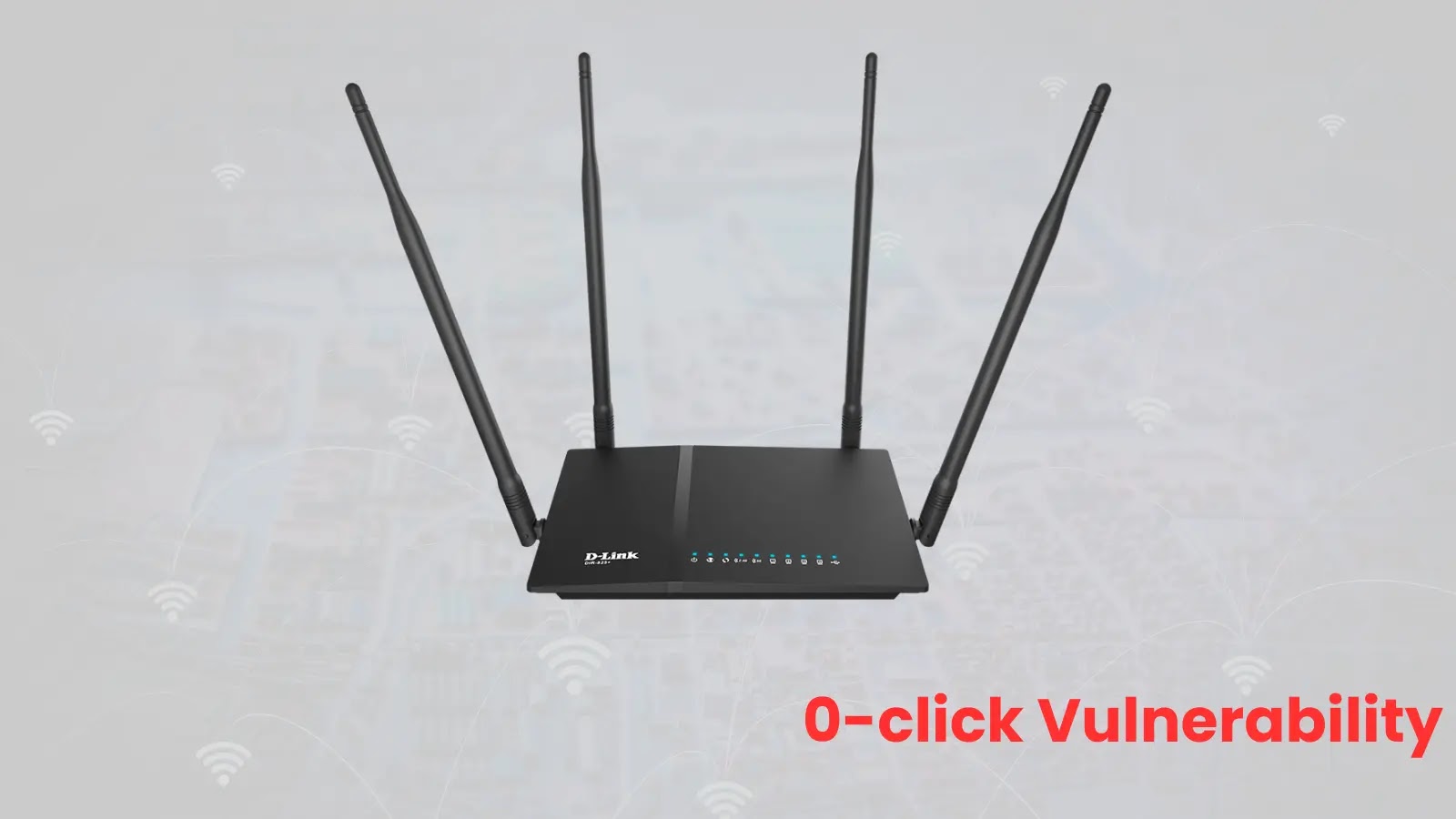
Critical D-Link 0-click Vulnerability Allows Remote Attackers to Crash the Server
The digital landscape is relentlessly challenged by persistent security threats. Among the most concerning vulnerabilities are those that demand no prior authentication or user interaction for successful exploitation. A newly identified critical flaw in D-Link routers, CVE-2025-7206, exemplifies this danger, allowing unauthenticated, zero-click remote attackers to completely crash the device’s HTTP server. This D-Link 0-click vulnerability highlights the urgent need for stringent security practices and timely updates, especially for devices forming the backbone of home and business networks.
Understanding the D-Link 0-click Vulnerability: CVE-2025-7206
Tracked as CVE-2025-7206, this critical vulnerability impacts the D-Link DIR-825 Rev.B router, specifically firmware version 2.10. The flaw is a stack-based buffer overflow, a common yet potent vulnerability class that arises from improper handling of data, leading to memory corruption.
The core of the issue resides within the router’s httpd binary. Specifically, the vulnerability manifests in the switch_language.cgi endpoint due to improper handling of the language parameter. Attackers can exploit this by sending a specially crafted request that causes the buffer to overflow, leading to the device’s HTTP server crashing. This constitutes a denial-of-service (DoS) attack, rendering the router’s web management interface inaccessible and potentially disrupting network services dependent on it.
What makes this vulnerability particularly insidious is its “zero-click” and “unauthenticated” nature. This means an attacker needs no valid credentials for the router, nor does a legitimate user need to interact with a malicious link or perform any action for the exploit to succeed. A simple unauthenticated request is sufficient to trigger the crash.
Impact and Risks of the HTTP Server Crash
While a server crash might seem less severe than data exfiltration or full device compromise, it poses significant risks:
- Management Interface Unavailability: The primary impact is the inability to access the router’s web-based management interface. This prevents administrators from monitoring device status, configuring settings, or performing crucial updates.
- Network Disruption (Indirect): While the vulnerability directly crashes the HTTP server, frequent or sustained attacks can indirectly lead to broader network instability or require a device reboot to restore functionality. For critical home or small business networks, this can translate to operational downtime.
- Prerequisite for Further Attacks: A crashed or unstable device can sometimes create opportunities for other, more sophisticated attacks if the device is forced into an unpredictable state or its security controls are temporarily compromised.
- Reputational Damage: For internet service providers or organizations relying on these routers, exposure to this vulnerability can impact trust and service availability.
Remediation Actions and Best Practices
Addressing CVE-2025-7206 and similar vulnerabilities requires immediate action and a proactive security posture:
- Immediate Firmware Update: The most crucial step is to apply any available firmware updates from D-Link that address CVE-2025-7206. Always download firmware directly from the official D-Link support website for your specific router model.
- Isolate Management Interfaces: If possible, restrict access to the router’s management interface (HTTP/HTTPS) from the WAN (internet) side. Only allow access from trusted internal networks.
- Network Segmentation: Implement network segmentation to isolate critical devices and sensitive data, limiting the blast radius of any compromised device.
- Regular Security Audits: Conduct periodic security audits of network infrastructure, including routers and IoT devices, to identify and rectify potential weaknesses.
- Monitor for Anomalous Activity: Implement network monitoring tools to detect unusual traffic patterns or connection attempts that could indicate an ongoing attack.
- Consider Router Replacement: If a patch for your specific model and firmware version is unavailable or if the router is an end-of-life product, consider replacing it with a more modern, securely maintained device.
Tools for Detection and Mitigation
Leveraging the right tools can significantly aid in identifying and mitigating network vulnerabilities, including those affecting routers:
| Tool Name | Purpose | Link |
|---|---|---|
| Nmap | Network discovery and security auditing, including identifying open ports and services that could indicate vulnerable HTTP servers. | https://nmap.org/ |
| OpenVAS / Greenbone Vulnerability Management | Comprehensive vulnerability scanning, capable of identifying known CVEs in network devices and web services. | https://www.greenbone.net/ |
| Router-specific Firmware Update Utilities | Provided by manufacturers to ensure secure and verified firmware updates. | Consult official D-Link support site for your model |
| Wireshark | Network protocol analyzer for deep packet inspection, useful for identifying malformed requests targeting device services. | https://www.wireshark.org/ |
Conclusion
The D-Link 0-click vulnerability (CVE-2025-7206) serves as a stark reminder of the persistent threats targeting network infrastructure. Zero-click, unauthenticated vulnerabilities are particularly dangerous due to their ease of exploitation and high impact. Prioritizing timely firmware updates, isolating management interfaces, and maintaining a robust security posture are non-negotiable for safeguarding networks against these critical flaws. Organizations and individual users alike must remain vigilant and proactive in securing their digital environments.





